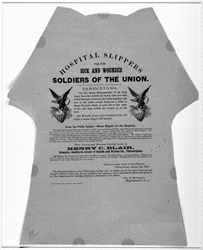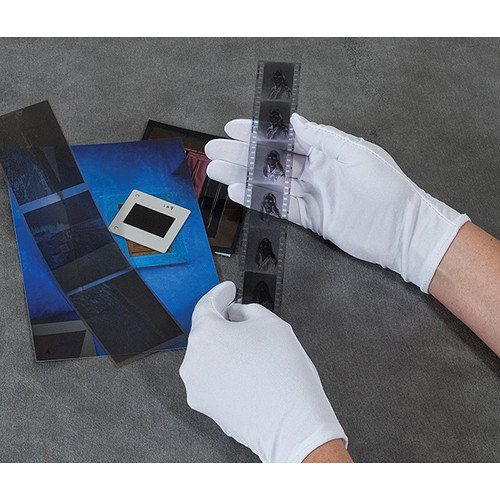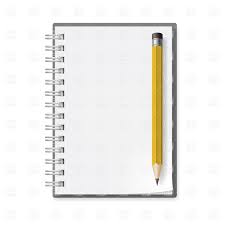| |
|
Primary Source Toolkit

There are times
when we simply have to "hold" a resource, touch it, and see
it first hand. Since most students and teachers will not have an opportunity
to visit the Library of Congress, it is necessary to bring this experience
to your classroom. Primary Source Toolkits can do this!
To construct a Primary Source Toolkit, high quality images can be
printed out on card stock, at full size. If you are unable to create
adequate prints at your school site, the images can be saved to a zip
or floppy disk and taken to a duplication service (like Kinko's). The
images can be stored in a "portfolio" file along with a magnifying
glass and a set of white, cotton gloves. This toolkit can be shared
by a pair of student "partners" or a small group. Below are
some basic tips for viewing documents and other primary source materials.
|
White Gloves
Wash your hands before handling
any artifact. Wearing white cotton gloves prevents the oils and salts
on your hands from damaging artifacts. So, it is important that white
gloves are part of your preservation tool kit. Listed below are some
Library of Congress guidelines for handling different resources. You
will note that in some cases white gloves are not worn.
|

|

Hospital
slippers for the sick and wounded soldiers of the Union |
Paper Materials
Hands should be clean and dry before handling paper items, as the oils from fingers can cause staining on the paper. Avoid having food or drinks in the area of your collection. Use pencils when working with your collection, to avoid possible disfigurement from inks.
Books
If a book will not lay flat, do not use force to open it further. The covers should always be supported when the book is open.
|
| Photographic Materials
If photographs are handled improperly,
they can suffer disastrous damage, including tears, cracks, losses,
abrasions, fingerprints, and stains. Avoid touching fragile photographic
materials; salts in human perspiration may damage surfaces. Wear clean
cotton gloves if possible when handling negatives and prints.
Film
Film should always be held by
its edges to avoid leaving finger prints on picture and sound areas. |

|
|

|
Recorded Sound
Do not touch the playing surfaces
of any recording. Handle recordings by their outer edges. |
|
Magnifying Glass
Viewing small print and details on maps is made
easier by using a magnifying glass. You can also observe more detail
in photographs.
|

|

|
Pencil and Paper
You will want to make notes
of your observations while examining primary source materials. Most
libraries do not allow the use of pens so you want to be sure to have
| |
















